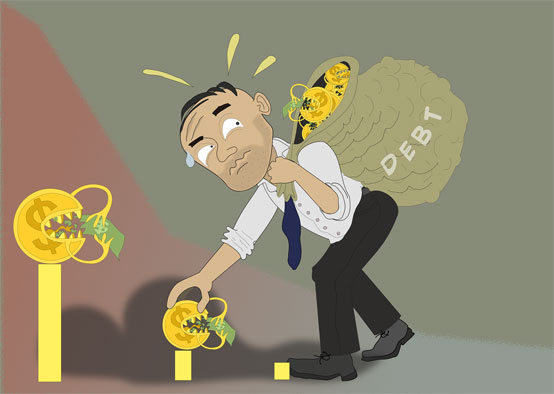The era of low interest rates in the United States has facilitated who exactly

Since the Fed has maintained a low interest rate environment this year, most U.S. lenders have been busy making money, especially lenders of home mortgage mortgages, such as banks, and various mortgage mortgage companies, which have seen business growth and an oversupply of staff.
Currently the benchmark federal funds rate remains at 0.09%, close to zero interest rate level
This phenomenon also makes many small and medium-sized investors quite puzzled. After the “black swan” – the new crown epidemic – the retail, travel, restaurant, transportation, and manufacturing industries in the U.S. have all been hit to varying degrees this year, with a large number of companies filing for bankruptcy protection, high unemployment, and declining credit. But why, these mortgage mortgage lenders, but ushered in the 2008 subprime mortgage crisis, the best year of profits?
Homebuyers don’t want to miss out on a great opportunity
There is a bottom line demand for business to thrive.
Unlike previous years, the spring home buying season across the U.S. was delayed until the summer due to the epidemic, and these new home buyers have seized the opportunity of plummeting 30-year mortgage rates to realize their dream of owning their first home. Many Americans who had already purchased homes did not want to miss the opportunity to replace their existing mortgages with higher interest rates, resulting in a large number of “refinancing” applications in the market.
Monthly purchases of new homes across the U.S. resumed in June at 776,000 units
Refinancing index remains high as 30-year mortgage rates remain low
According to Freddie Mac (Freddie Mac) data on August 20, 30-year fixed-rate mortgage rates remained at 2.99% in August, the first time in nearly 50 years that they fell below 3%. On the one hand, the U.S. macro policy, as a “prescription” to stimulate this year’s sluggish economy; on the other hand, many white-collar workers who can work from home, can afford to get a loan, tired of the cage-like life in urban areas, coupled with the emergence of riots and security problems in a number of cities across the United States this year, want to escape the virus and security double threat This, coupled with the riots and security problems that have occurred in several cities across the United States this year, have led to a sharp recovery in demand for homes on the home buying end of the market.
30-year Freddie Mac fixed-rate mortgage rate drops to 2.99%
Photo credit: Freddie Mac; 30-Yr FRMs
Lenders take advantage of arbitrage
The U.S. mortgage lenders are not going to miss this “windfall”.
For them, the demand for mortgages from homebuyers can quickly swell their profits.
How to make money? Buy low, sell high, earn a spread. For example, banks and lenders, after issuing the loans, they immediately securitized these mortgages, packaged into MBS (Mortgage-backed Securities), the “culprit” of the 2008 subprime mortgage crisis, and then quickly sold these securities to investors. then quickly sold these securities to investors in the capital markets. Thus, the risk was not theirs, but the money they made on the deal.
Lender Profitability and Unmeasured Costs
Photo credit: Urban Institute; HOUSING FINANCE AT A GLANCE
According to a July report by the Urban Institute, these lenders are currently making about $5 for every $100 mortgage they originate, the highest level since 2000.
The MBS investors are mostly institutional, and are by no means “ingrates”, making a loss. These mortgage companies, the reason why these MBS can quickly turn to cash, because the current market benchmark yield – Treasury yields, has been very low, on the one hand, a large number of investment institutions money, into the Treasury such a safe haven, on the other hand, it makes MBS such a relatively safe, but higher yield securities, to get the market’s favor.
U.S. 10-year Treasury yield to 0.66%
This year, the spread between the U.S. 30-year fixed-rate mortgage mortgage rate, and the 10-year Treasury yield, has approached the level of the 2008 subprime crisis, at about 2.66%, which has led to a new all-time high in profitability for these mortgage mortgage lenders.
30-Year Fixed Rate Mortgage Mortgage Rate Spread to 10-Year Treasury Yield














